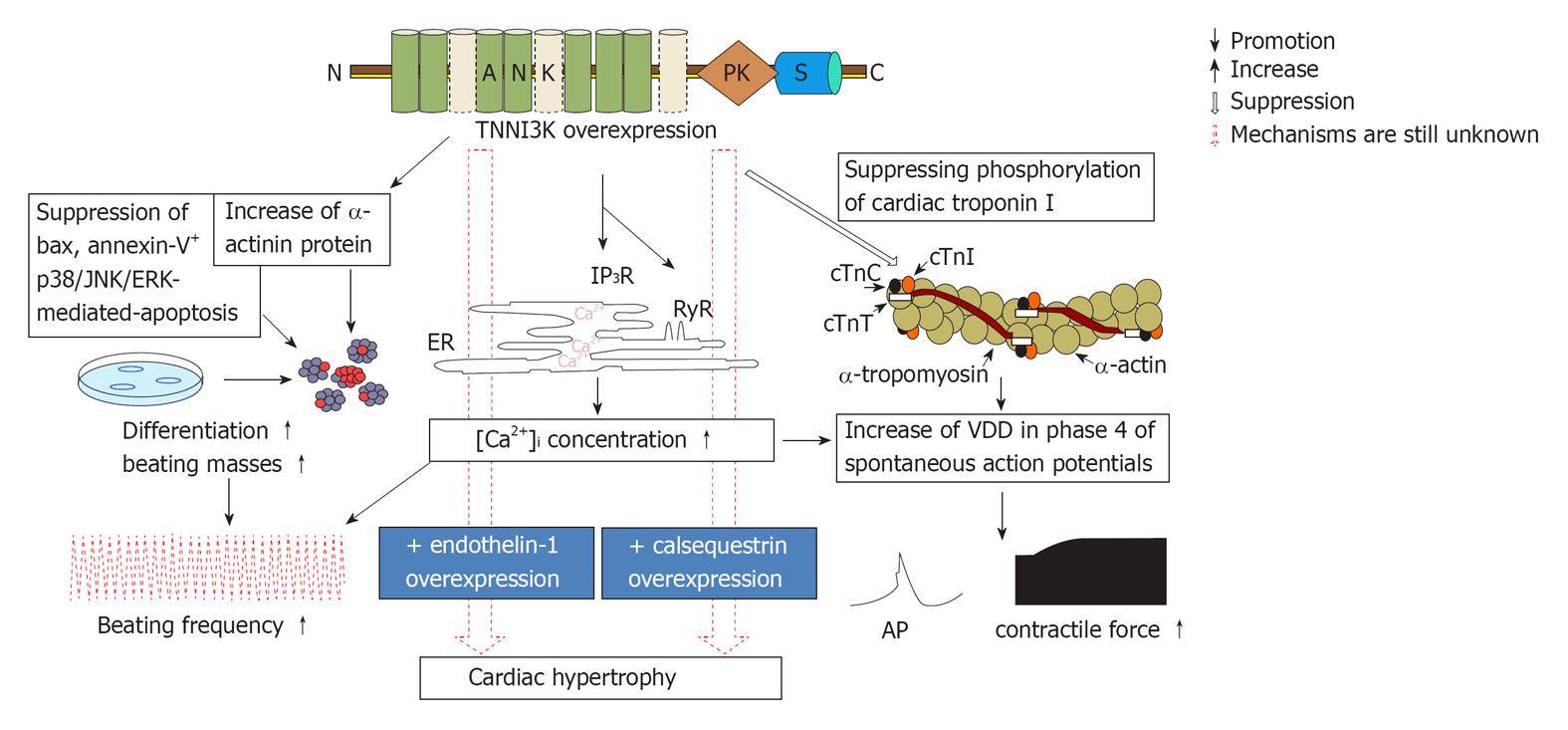Copyright
©2012 Baishideng.
World J Hypertens. Apr 23, 2012; 2(2): 22-28
Published online Apr 23, 2012. doi: 10.5494/wjh.v2.i2.22
Published online Apr 23, 2012. doi: 10.5494/wjh.v2.i2.22
Figure 1 Putative TNNI3K interacted partners and their functions.
A: TNNI3K-overexpression increases the α-actinin-positive cell population and the expression of α-actinin protein (see Figure 4 in [4]) and/or increases expression of other differentiation-related factors, including tbx5, Mef2c, GATA-4[7,27], suppresses Bax, annexin-V+ and p38/JNK/ERK-mediated apoptosis to promote differentiation of cardiomyocytes and increases formation of beating masses; B: TNNI3K overexpression may increase the IP3R and ryanodine receptor-mediated Ca2+ response to increase intracellular Ca2+ concentration to enhance beating frequency of beating masses; C: TNNI3K overexpression also increases the velocity of diastolic depolarization of the phase 4 of spontaneous action potentials through suppressing phosphorylation of cTnI, resulting in increasing the beating frequency of beating masses; D: All these signaling above would have its beneficial promotion on cardiomyogenesis, cardiac performance and protection of myocardium from ischemic injury in some cardiac diseases, including AMI. However, in some pathophysiological conditions, TNNI3K-overexpression with high-expression of hypertrophy factors, such as ET-1 or calsequestrin, would increase the risk of cardiac hypertrophy[5,6]. ANK: Ankyrin repeat domain; PK: Protein kinase domain; S: Serine-rich domain; N: N-terminal of the sequence; C: C-terminal of the sequence; ER: Sarcoplasmic reticulum; IP3R: Inositol trisphosphate receptors; RyR: Ryanodine receptors; cTnI: Cardiac troponin I; cTnT: Cardiac troponin T; cTnC: Cardiac troponin C; VDD: Velocity of diastolic depolarization in the phase 4 of spontaneous action potentials; [Ca2+]i: Intracellular calcium concentrations; AP: Spontaneous action potentials.
- Citation: Lai ZF, Chen YZ. Evidence, hypotheses and significance of MAP kinase TNNI3K interacting with its partners. World J Hypertens 2012; 2(2): 22-28
- URL: https://www.wjgnet.com/2220-3168/full/v2/i2/22.htm
- DOI: https://dx.doi.org/10.5494/wjh.v2.i2.22









